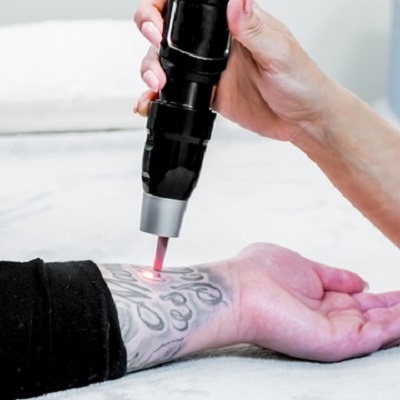Introduction
Tattoos have become increasingly popular over the past few decades, with millions of people choosing to express themselves through body art. However, as trends change or personal circumstances evolve, many individuals find themselves regretting their tattoos. This has led to a growing interest in tattoo removal methods, particularly laser tattoo removal, which is touted as one of the most effective techniques available. In this article, we will explore the effectiveness of Laser Tattoo Removal in Oman, discuss success rates, and delve into the factors that influence the outcomes of this procedure.
Understanding Laser Tattoo Removal
How Laser Tattoo Removal Works
Laser tattoo removal employs concentrated light beams to break down the ink particles embedded in the skin. When the laser is directed at the tattoo, the energy produced by the laser targets the ink pigments, causing them to fragment into smaller particles. The body's immune system then gradually eliminates these fragmented particles over time. This process typically requires multiple sessions, depending on various factors, including the tattoo's size, color, and depth.
Types of Lasers Used
Different types of lasers are used in tattoo removal, including:
- Q-Switched Lasers: These lasers emit short bursts of high-intensity light, making them effective for a wide range of ink colors. They are often the first choice for tattoo removal due to their ability to minimize damage to surrounding skin.
- Pico Lasers: A more recent development, pico lasers use ultra-short pulses to target ink particles. They are believed to be more effective and cause less trauma to the skin than traditional Q-switched lasers, leading to quicker recovery times.
Factors Affecting Success Rates
Tattoo Characteristics
- Color: The color of the tattoo plays a significant role in the effectiveness of laser removal. Dark colors, particularly black and blue, respond best to laser treatment. Lighter colors, such as yellow and green, are often more challenging to remove.
- Size and Complexity: Larger and more intricate tattoos typically require more sessions for complete removal. Simple designs can often be treated more effectively in fewer sessions.
- Age of the Tattoo: Older tattoos tend to fade and become easier to remove than newer ones, as the ink may have already broken down to some extent.
Skin Type and Health
The patient’s skin type, color, and overall health can also impact the effectiveness of laser tattoo removal. For instance:
- Skin Type: Lighter skin tones generally have better outcomes since the contrast between the ink and the skin allows the laser to target the ink more effectively. Conversely, darker skin tones can absorb more laser energy, potentially leading to complications.
- Health: Individuals with certain health conditions or those who smoke may experience reduced effectiveness due to impaired healing processes.
Treatment Frequency and Aftercare
The frequency of treatments and adherence to aftercare instructions are crucial for achieving optimal results. Treatments are typically spaced several weeks apart to allow the skin to heal and the body to process the ink fragments. Proper aftercare, including keeping the treated area clean and protected from the sun, can also significantly influence healing and success rates.
Success Rates of Laser Tattoo Removal
Statistical Overview
Studies indicate that laser tattoo removal can achieve significant fading or complete removal in approximately 70-90% of cases. The success rate varies based on several factors, including those mentioned above. For instance, black tattoos can often be removed with greater efficiency compared to multicolored designs.
Realistic Expectations
It’s important for individuals seeking tattoo removal to have realistic expectations. While many people achieve satisfactory results, complete removal may not be possible in every case. Some residual ink may remain, and factors like scarring or skin discoloration can occur, particularly in individuals with darker skin tones.
Conclusion
Laser tattoo removal has proven to be a highly effective method for those seeking to eliminate unwanted tattoos. While success rates are generally high, various factors such as tattoo characteristics, skin type, and treatment adherence play crucial roles in the overall effectiveness of the procedure. Individuals considering laser tattoo removal should consult with experienced practitioners to set realistic expectations and develop a personalized treatment plan. With advancements in technology and a better understanding of the tattoo removal process, many people are finding success in their journeys toward tattoo-free skin.





Comments